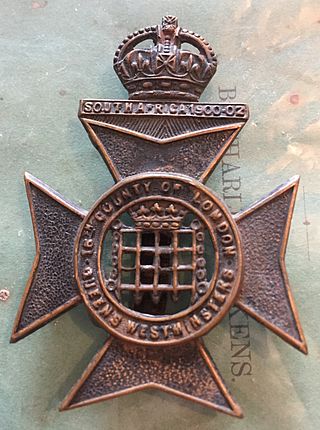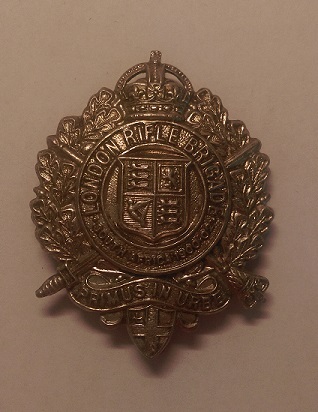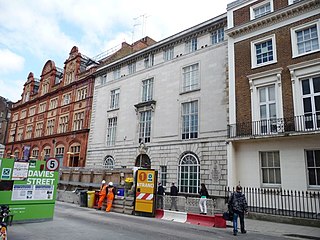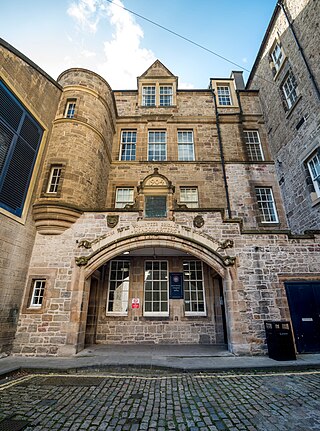
The King's Royal Rifle Corps was an infantry rifle regiment of the British Army that was originally raised in British North America as the Royal American Regiment during the phase of the Seven Years' War in North America known in the United States as 'The French and Indian War.' Subsequently numbered the 60th Regiment of Foot, the regiment served for more than 200 years throughout the British Empire. In 1958, the regiment joined the Oxfordshire and Buckinghamshire Light Infantry and the Rifle Brigade in the Green Jackets Brigade and in 1966 the three regiments were formally amalgamated to become the Royal Green Jackets. The KRRC became the 2nd Battalion, Royal Green Jackets. On the disbandment of the 1st Battalion, Royal Green Jackets in 1992, the RGJ's KRRC battalion was redesignated as the 1st Battalion, Royal Green Jackets, eventually becoming 2nd Battalion, The Rifles in 2007.
The Infantry of the British Army comprises 49 infantry battalions, from 19 regiments. Of these, 33 battalions are part of the Regular army and the remaining 16 a part of the Army Reserve. The British Army's Infantry takes on a variety of roles, including armoured, mechanised, air assault and light.

The Royal Academy of Dramatic Art, commonly abbreviated to RADA, is a drama school in London, England, which provides vocational conservatoire training for theatre, film, television, and radio. It is based in the Bloomsbury area of Central London, close to the Senate House complex of the University of London, and is a founding member of the Federation of Drama Schools.

The 2nd King Edward VII's Own Gurkha Rifles (The Sirmoor Rifles) was a rifle regiment of the British Indian Army before being transferred to the British Army on India's independence in 1947. The 4th Battalion joined the Indian Army as the 5th Battalion, 8th Gorkha Rifles (Sirmoor Rifles), where it exists to this day. As part of the British Army, the regiment served in Malaya, Hong Kong and Brunei until 1994 when it was amalgamated with the other three British Army Gurkha infantry regiments to form the Royal Gurkha Rifles. It is the only Gurkha regiment which did not have a khukuri on its cap badge.
The London Regiment was an infantry regiment in the British Army, part of the Territorial Force. The regiment saw service in the First World War and was disbanded in 1938, shortly before the Second World War, when most of its battalions were converted to other roles or transferred elsewhere and reformed in 1993. The London Guards date their formation to that of this Regiment in 1908.

The Place is a dance and performance centre in Duke's Road near Euston in the London Borough of Camden. It is the home of London Contemporary Dance School and the Robin Howard Dance Theatre, and formerly the Richard Alston Dance Company.

The Queen's Westminsters were an infantry regiment of the Territorial Army, part of the British Army. Originally formed from Rifle Volunteer Corps, which were established after a French invasion scare of 1859. The unit became part of the newly established London Regiment on the formation of the Territorial Force in 1908. It was subsequently amalgamated in 1921 with the Civil Service Rifles, and became a territorial Battalion of the King's Royal Rifle Corps in 1937. It ceased to exist as separate entity after it was amalgamated in 1961.
The Rifles is an infantry regiment of the British Army. Formed in 2007, it consists of four Regular battalions and three Reserve battalions. Each Regular battalion of The Rifles was formerly an individual battalion of one of the two large regiments of the Light Division. Since formation, the regiment has been involved in combat operations in the later stages of the Iraq War and in the War in Afghanistan.

The Royal Irish Rifles was an infantry rifle regiment of the British Army, first created in 1881 by the amalgamation of the 83rd Regiment of Foot and the 86th Regiment of Foot. The regiment saw service in the Second Boer War, the First World War, the Second World War, and the Korean War.

The Drill, previously known as Lincoln Drill Hall, is a former drill hall in Lincoln, England, which is now used as a multi-purpose community hub, hosting live music, comedy shows, pantomimes and live wrestling performances. It is currently under the stewardship of the Lincoln College Group. After being fully refurbished, and renovated, it re-opened to the public on 11 December 2021.
The 9th Battalion, London Regiment was a Territorial Army infantry battalion of the British Army. The London Regiment was formed in 1908 in order to regiment the various Volunteer Force battalions in the newly formed County of London, and the Queen Victoria's Rifles were one of twenty six units brought together in this way.

The Dalmeny Street drill hall in Edinburgh, was built as a military drill hall in 1901, and between 2003 and 2010 was redeveloped as community arts and education centre under the name TheOut of the Blue Drill Hall. The drill hall is protected as a category A listed building.
The Paddington Rifles was a unit of the Territorial Army.

Chenies Street is a street in Bloomsbury, London, that runs between Tottenham Court Road and Gower Street. It is the location of a number of notable buildings such as Minerva House, the Drill Hall, and a memorial to The Rangers, 12th County of London Regiment. North Crescent starts and ends on the northern side of Chenies Street.

The London Rifle Brigade was a volunteer regiment of the British Army.

The Rangers was a volunteer unit of the British Army, originally formed in 1860. It provided a detachment for service in the Second Boer War, saw intensive action on the Western Front in the First World War, and served as motorised infantry during the Second World War during the campaigns in Greece and the Western Desert.
The St Giles's and St George's Bloomsbury Rifle Volunteer Corps, more familiarly known as the Bloomsbury Rifles, was a Volunteer unit of the British Army in London from 1803 to 1814 and from 1860 until 1908.

The Davies Street drill hall is a former military installation in Davies Street, London.

The Forrest Hill drill hall is a former military installation in Edinburgh, Scotland. The building is now owned by the University of Edinburgh.

The Victoria Road drill hall is a former military installation in Glasgow.
















